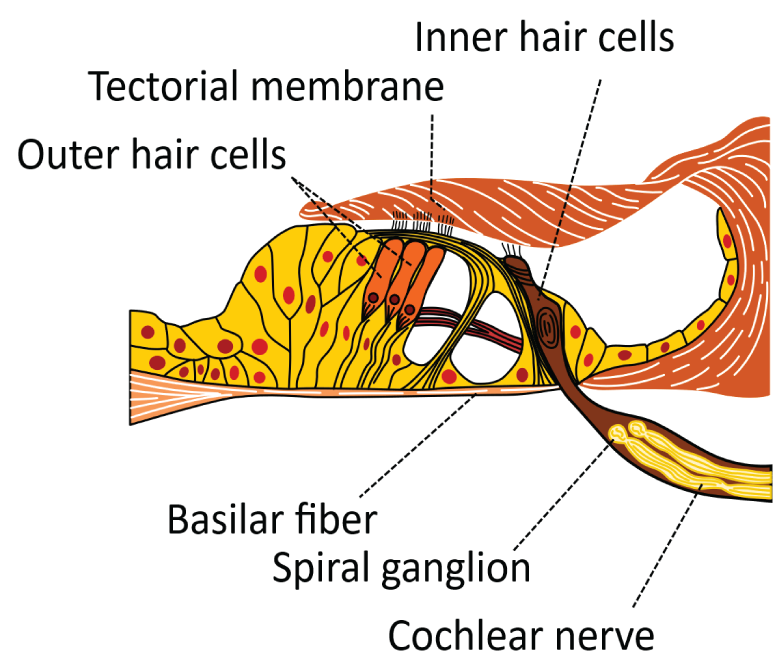
Age-related Hearing Loss Linked to Transcription Factor
March 2019
Recently, a group of researchers discovered a gene linked to age-related hearing loss. In a collaborative study published late last year in Nature, the authors reported that Helios, a transcription factor, is responsible for the maturation of outer hair cells (OHCs). These cells are located in the outer ear, and they are critical for sound sensitivity and tuning (Figure 1).

Figure 1: Section through the organ of Corti, showing inner and outer hair cells. Courtesy of Madhero88 through CC BY-SA 3.0
OHCs and inner hair cells (IHCs), do not regenerate once they are damaged or lost. For this reason, progressive loss of OHCs, in addition to loss of IHCs, leads to much of the etiology of age-related hearing loss.
"… attempts to direct stem cells towards hair cell fates have, so far, resulted only in the formation of immature cells that lack many of the markers of mature IHCs or OHCs," note the authors.
In order for scientists to research and develop treatments for age-related hearing loss, it is important to first gain a better understanding of the maturation process in the cells involved.
In light of this, researchers identified a set of OHC-enriched genes through RNA sequencing. They honed in on the gene Ikzf2 (which encodes Helios), because it was markedly enriched at all tested maturation timepoints, starting from postnatal day 4.
Then, through a series of genomic and functional approaches, the authors showed that mutations in Helios could lead to OHC bundling and hearing deterioration.
Using TriLink Cas9 mRNA, the authors also created a transgenic line of mice, which led them to the conclusion that Ikzf2 is the causative gene underlying auditory dysfunction in mice previously known to have hearing loss.
Ultimately, the authors concluded that Helios is necessary for hearing, as it regulates the genes responsible for maturation of the OHCs. In addition, Helios is able to induce the critical functional characteristics of OHCs, as well as many of the molecular characteristics, when expressed in early postnatal IHCs.
"To our knowledge, this is the first study to demonstrate functional shifts in postnatal hair cell molecular identities via viral gene delivery. This suggests that the delivery of combinations of transcription factors may lead to successful regeneration of functional OHCs in the deafened cochlea," the authors conclude.
Featured product: Cas9 mRNA.
Have a question? Visit Ask An Expert.

